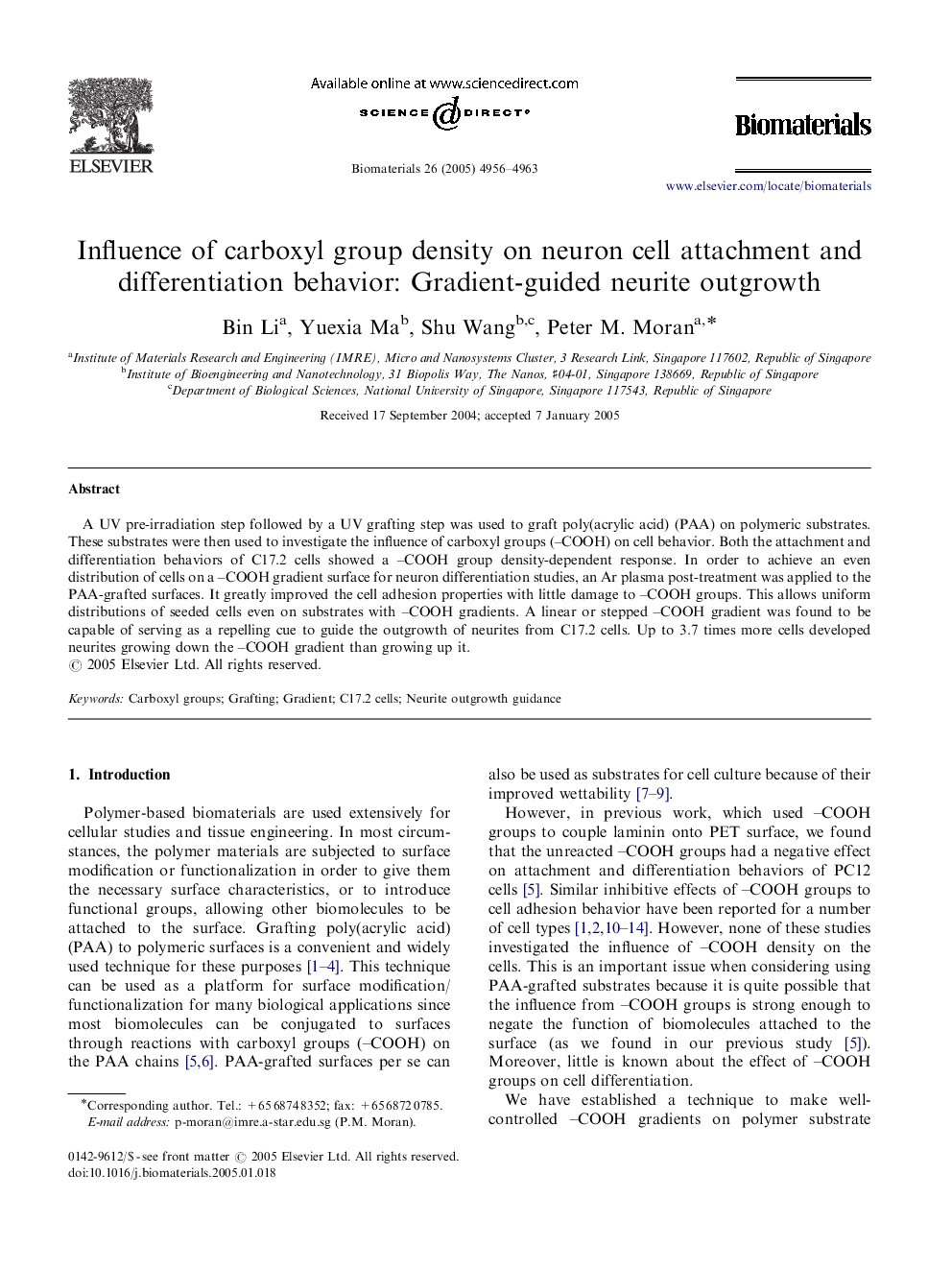| Article ID | Journal | Published Year | Pages | File Type |
|---|---|---|---|---|
| 12064 | Biomaterials | 2005 | 8 Pages |
A UV pre-irradiation step followed by a UV grafting step was used to graft poly(acrylic acid) (PAA) on polymeric substrates. These substrates were then used to investigate the influence of carboxyl groups (–COOH) on cell behavior. Both the attachment and differentiation behaviors of C17.2 cells showed a –COOH group density-dependent response. In order to achieve an even distribution of cells on a –COOH gradient surface for neuron differentiation studies, an Ar plasma post-treatment was applied to the PAA-grafted surfaces. It greatly improved the cell adhesion properties with little damage to –COOH groups. This allows uniform distributions of seeded cells even on substrates with –COOH gradients. A linear or stepped –COOH gradient was found to be capable of serving as a repelling cue to guide the outgrowth of neurites from C17.2 cells. Up to 3.7 times more cells developed neurites growing down the –COOH gradient than growing up it.
